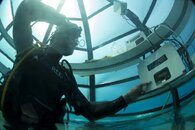descent
Contributor
In the shallow bay before the medieval town of Noli, a short distance from the sunny Ligurian orchards where Christopher Columbus relaxed between voyages, a cluster of undersea "biospheres" are growing experimental crops.
The project aims to deliver healthy, locally grown food and improve nutrition by developing technologies that will allow sustainable agriculture near hostile land environments, in places where arable soil or clean water may not be available for traditional farming.
The planning and launch of the Nemo's Garden project was described in a recent ScubaBoard article.
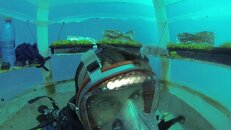
One of the first crops is basil (Ocimum basilicum).
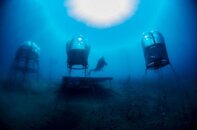
At shallow depths (between 18 and 36 feet), there is enough light for the seedlings to photosynthesize and grow. Humidity inside the domes condenses on the walls, providing fresh water.
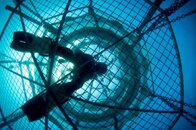
Looking up into the dry area inside a biosphere.
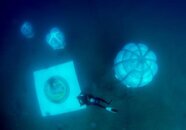
Overview of the three existing domes.
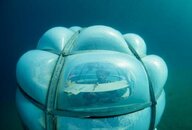
Gianni Fontanesi, the coordinator of the Nemo's Garden project, works inside of "biosphere #3".
Facebook page for L'Orto di Nemo.
galleries: ten images (Secolo XIX Multimedia), from Il Socolo XIX, via La Stampa; and twelve images from the Blue Planet project at Sustainable Education.
The project aims to deliver healthy, locally grown food and improve nutrition by developing technologies that will allow sustainable agriculture near hostile land environments, in places where arable soil or clean water may not be available for traditional farming.
The planning and launch of the Nemo's Garden project was described in a recent ScubaBoard article.

One of the first crops is basil (Ocimum basilicum).

At shallow depths (between 18 and 36 feet), there is enough light for the seedlings to photosynthesize and grow. Humidity inside the domes condenses on the walls, providing fresh water.

Looking up into the dry area inside a biosphere.

Overview of the three existing domes.

Gianni Fontanesi, the coordinator of the Nemo's Garden project, works inside of "biosphere #3".
Facebook page for L'Orto di Nemo.
galleries: ten images (Secolo XIX Multimedia), from Il Socolo XIX, via La Stampa; and twelve images from the Blue Planet project at Sustainable Education.
Last edited:




